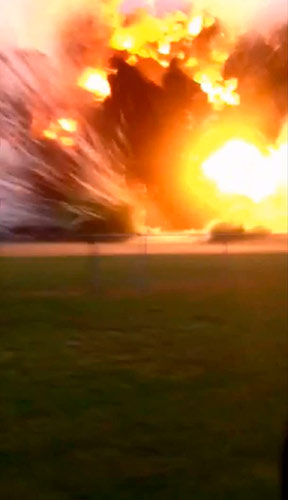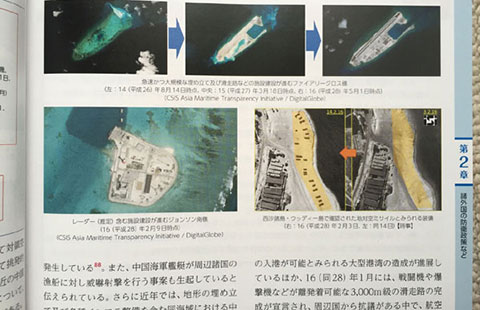Rescuers search for survivors of Texas blast
WEST, Texas - Rescuers worked in cold rain on Thursday to find survivors amid the rubble of houses destroyed in a fiery explosion at a Texas fertilizer plant filled with hazardous chemical tanks.
The death toll in West, Texas ranged from five to 15 people and was likely to change as rescuers went from house to house along the burned-out streets after the West Fertilizer Co blew up on Wednesday night, said Sgt. William Patrick Swanton of the police department in nearby Waco.
|
|
The US Chemical Safety Board, a federal agency charged with investigating industrial chemical accidents, was on the scene, as was the Bureau of Alcohol, Tobacco, Firearms and Explosives.
Firefighters had been battling a fire at the plant on Wednesday night for about 20 minutes before the blast rocked the town of 2,700 people about 20 miles (32 km) north of Waco.
Three to four volunteer firefighters were still missing, Swanton said.
"They were actively fighting the fire at the time the explosion occurred," he said at a news conference held in a cattle auction house, where cows lowed behind him.
Swanton said the plant was storing huge tanks of anhydrous ammonia. Anhydrous ammonia is used by farmers as fertilizer to boost nitrogen levels in soil and increase crop production.
According to the Centers for Disease Control, anhydrous ammonia and water produces a poisonous cloud. When ammonia mixes with air, it forms an explosive mixture, and containers may explode when heated, according to the CDC.
The West plant is one of thousands of sites across rural America that store and sell hazardous materials such as chemicals and fertilizer for agricultural use, many within close range of residences and schools. Privately owned by 83-year-old Donald Adair, the company has fewer than 10 employees.
The plant had not been inspected by state officials since 2006, when a complaint of an ammonia smell was resolved, said Zak Covar, executive director of the Texas Commission on Environmental Quality.
State inspections are done only when there is a complaint, Covar said.
The federal Environmental Protection Agency fined the firm $2,300 in 2006 for failing to implement a risk management plan.
The plant's owner could not be reached for comment.
Fire, evacuations before blast
The firefighters had been evacuating several blocks around the fire before the blast out of concern for dangerous fumes, Swanton said. That threat had abated by Thursday, he said.
In West, the middle school, which was badly damaged, was one fifth of a mile from the plant and the high school was one-third of a mile away.
The blast destroyed 60 to 80 houses, reduced a 50-unit apartment complex to what one local official called "a skeleton standing up" and left a horrific landscape of burned-out buildings and blackened rubble.
"Last night was truly a nightmare scenario," said Texas Governor Rick Perry. "This tragedy has most likely hit every family."
Perry declared McLennan County a disaster area and said he would request federal disaster aid from President Barack Obama.
Texas is no stranger to industrial disasters. In 1947, 3,200 tons of ammonium nitrate fertilizer detonated aboard a ship in a Texas City port, killing almost 600 people. It is believed to be the deadliest industrial accident in US history.
More recently, a 2005 explosion at a BP refinery in Texas City killed 15 people and injured more than 170 others when hydrocarbon vapors exploded in a processing plant.
The operation in West remained a search and rescue mission, Swanton said.
"They have not gotten to the point of no return where they don't think that there's anybody still alive," he said.
He said rain and cooler temperatures were a concern. At early afternoon, the temperature was just 50 degrees Fahrenheit, or 10 degrees Centigrade. The average temperature for the area in April is closer to 67 degrees F.
"With the temperature getting a little cooler, with the weather raining here - pretty significant rains came through - we certainly want to find folks," he said.
Bodies had been taken to a nearby ball field and then a community center, he said.
Officials said they had moved 133 people out of a nearby nursing home.
If it was an industrial accident, investigators would look at whether firefighters ignited the blast by pouring water on a volatile substance. Nim Kidd, chief of the Texas Division of Emergency Management, said it was too early to speculate.
"A lot of firefighters will use their No 1 tool, which is water, in a hazardous materials chemical situation to cool the surrounding environment," he told a briefing in Austin.
Obama, who flew to Boston for a memorial service for victims of the Boston Marathon bombing, offered support and prayers to the victims in Texas.
Three hospitals in Waco and Dallas reported treating more than 160 injuries from the blast.
Ground motion from the blast registered as a magnitude 2.1 seismic tremor and created a jolt felt 80 miles(130 km) away in Dallas, the US Geological Survey reported.
- Massive blast rips through Texas town
- Live report: Boston & Texas plant blast
- Scores dead in Texas fertilizer plant blast
- Hundreds believed injured in Texas fertilizer plant blast
- At least 15 people stabbed at Texas college
- 3 children die in Texas fire
- No charges for US parents over adopted boy's death
- University evacuated amid bomb scare in Texas, US


























